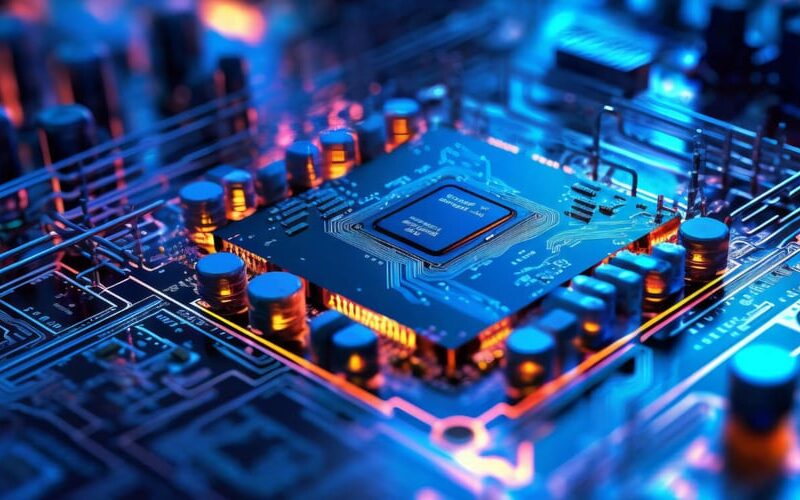The technological advancements in this decade have been immense, transforming virtually every aspect of our lives. From the rise of smart devices to the seamless integration of artificial intelligence, we are witnessing a revolution that is reshaping the boundaries of innovation. At the heart of this transformation lies a powerful yet often overlooked component: embedded systems.
Embedded systems are the unsung heroes behind the sleek interfaces of our smartphones, the precision of modern automobiles, and the efficiency of countless industrial processes. These specialized computing systems are designed to perform dedicated functions within larger devices, often operating quietly behind the scenes. Their role has become increasingly critical as technology continues to evolve, driving progress in various fields including consumer electronics, healthcare, automotive, and more.
In this blog, we will delve into the world of embedded systems. We’ll examine how these systems contribute to the technological advancements of today and look ahead to the future, where embedded systems are set to play an even more integral role. Join us on this journey to understand the silent powerhouses that are shaping our digital age and discover how they are paving the way for innovations yet to come. The field of embedded systems is rapidly evolving, driven by technological advancements and growing demands for smarter, more efficient devices.
An embedded system can be thought of as a “computer within a machine” that controls and monitors the machinery or device it’s part of. It combines hardware and software to perform a particular task. For example:- In your phones embedded systems manage tasks like touchscreen input, camera operation, and connectivity features or in a microwave the embedded system controls the heating process, interprets user inputs from the keypad, and manages the display.
Characteristic
Embedded systems are special types of computers built to do one or a few specific jobs really well. Unlike general-purpose computers, which can run many different programs, embedded systems are designed to be highly efficient at their particular tasks.
Think of an embedded system like a tool that’s made for a particular job. For example, a microwave’s embedded system is designed only to manage heating and cooking. It’s not meant to do anything else, which makes it very good at what it does. Many embedded systems need to respond quickly to events. For instance, in a car, the airbag system must detect a crash and deploy the airbag in just a few milliseconds to protect passengers. This quick response is crucial for safety. Embedded systems usually have less computing power, memory, and storage compared to regular computers. They need to be designed to use these resources efficiently. Imagine having a tiny kitchen with only a few tools—you need to make sure everything fits and works well in that limited space. Because embedded systems are often used in important places, like medical devices or factory machines, they need to be very reliable. They must work correctly over long periods without breaking down, like a dependable friend who always shows up when needed.
Future and Importance
The future of embedded systems is vibrant and full of potential, with these systems poised to become even more crucial as technology advances. Embedded systems, designed to perform dedicated functions within larger devices, are increasingly at the core of technological innovation. They are driving the development of smart home devices like voice assistants and security systems, wearable technology such as fitness trackers and smartwatches, and advanced automotive features including autonomous driving and advanced safety systems.
As we move forward, embedded systems will play a central role in the expansion of the Internet of Things (IoT), where everyday objects become interconnected and capable of communicating with each other. This interconnectivity will enable more intelligent and automated environments, from smart cities that manage traffic and energy more efficiently to industrial systems that optimize manufacturing processes and reduce downtime through predictive maintenance.
The integration of artificial intelligence (AI) and machine learning (ML) into embedded systems will further enhance their capabilities, allowing them to process data locally and make real-time decisions without relying on cloud-based servers. This will improve performance, reduce latency, and increase the overall efficiency of devices.
Power efficiency will continue to be a key focus, especially as embedded systems are used in battery-powered devices like mobile gadgets and wearables. Innovations in low-power design will help extend battery life and reduce energy consumption, which is critical for portable applications and sustainable technology.
Reliability and stability will remain paramount, particularly for critical applications in healthcare, automotive safety, and industrial control systems. Future embedded systems will need to meet rigorous standards for performance and dependability to ensure they function reliably over long periods and under varying conditions.
Overall, embedded systems are set to become even more integral to our daily lives and technological landscape. They will enable smarter, more connected solutions that improve efficiency, safety, and convenience across a wide range of applications. The continued advancement of embedded systems will drive innovation, shape the future of technology, and create new possibilities in how we interact with the world around us.
Source link
lol

